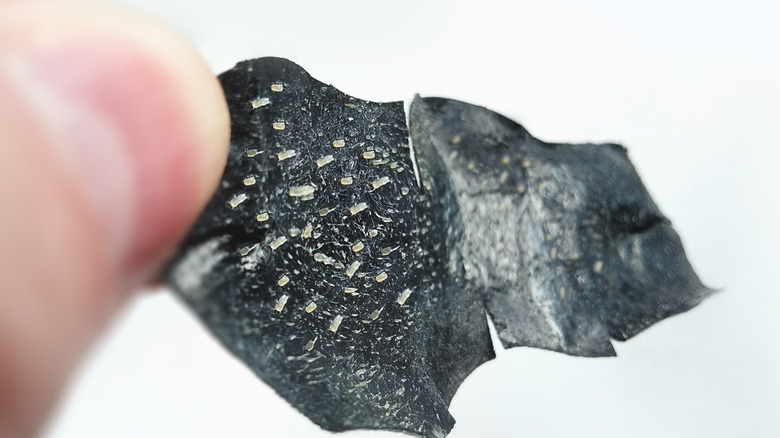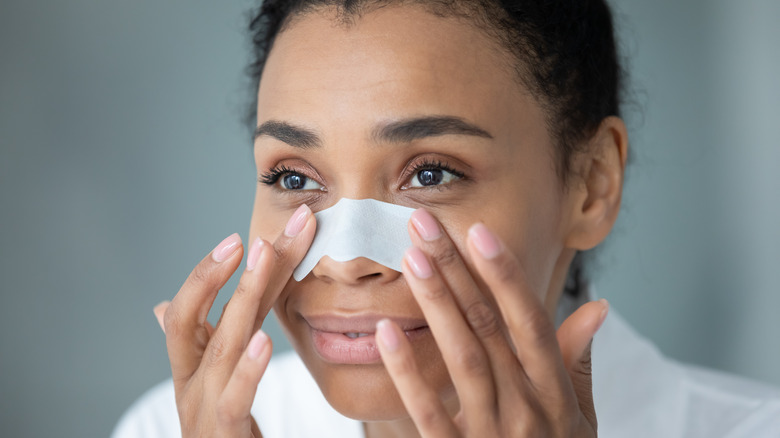The Real Reason You Shouldn't Use Nose Strips Like Bioré
Pore strips like Bioré rocketed into the beauty market in the 1990s, and the so disgusting yet so satisfying appeal of taking a look at what you could get out of your pores on those little strips has continued (via The Wall Street Journal). And the stuff does come out; however, is it really the best way to clean your pores?
First — why do black blemishes show up so often on our nose? "The nose is a perfect storm to make blackheads, because the pores are stretched out on a convex surface," Dr. Purvisha Patel, board-certified dermatologist, told Well+Good. And second — what really are those black spots? Turns out it's more than just blackheads.
Board-certified dermatologist Michelle Henry told Allure that you get the type of acne known as blackheads "when the opening of a hair follicle becomes clogged or plugged with dead skin cells, bacteria, and oil." The clogged material "gets oxidized by the air and appears black, hence the name blackhead." Blackheads are different from clogged pores, though they might look pretty similar. Clogged pores, or "sebaceous filaments," aren't acne, and they make pores look enlarged. Facialist Kate Kerr told Refinery 29 that, "An overproduction of sebum from this gland can cause it to become clogged and appear like a blackhead."
Pore strips may make your pores appear bigger over time
The distinction between what is really a blackhead and what isn't is important when it comes to pore strips. Pore strips have an adhesive that grabs onto the gunk from sebaceous filaments and pulls it out, but it's not strong enough to remove blackheads (via Metro). Removing blackheads has to be done by extraction and should be done by an expert. Pore strips might get you a quick cosmetic fix, but it won't stop enlarged pores from coming back (via Allure).
Pore strips remove the hydrating oil from the inflicted area, and then your body reacts by making more oil which then can lead to more clogged pores and blackheads (via Shape). Plus, instead of making pores smaller, they can do the opposite. Dermatologist Dendy Engelman told Byrdie that when using pore strips, "You risk damaging the skin and thus, [making] your pores bigger."
Instead of pore strips to try and remove blackheads, address the underlying problem. Try using a facial cleanser that includes an exfoliant (via Byrdie). Glycolic or salicylic acid as well as retinoids or benzoyl peroxide can also help — keep in mind, you should keep your skin moisturized so as to not trigger your skin to overproduce oil (via Insider). These methods may not be as exciting as ripping off a pore strip, but they're better for your skin.

